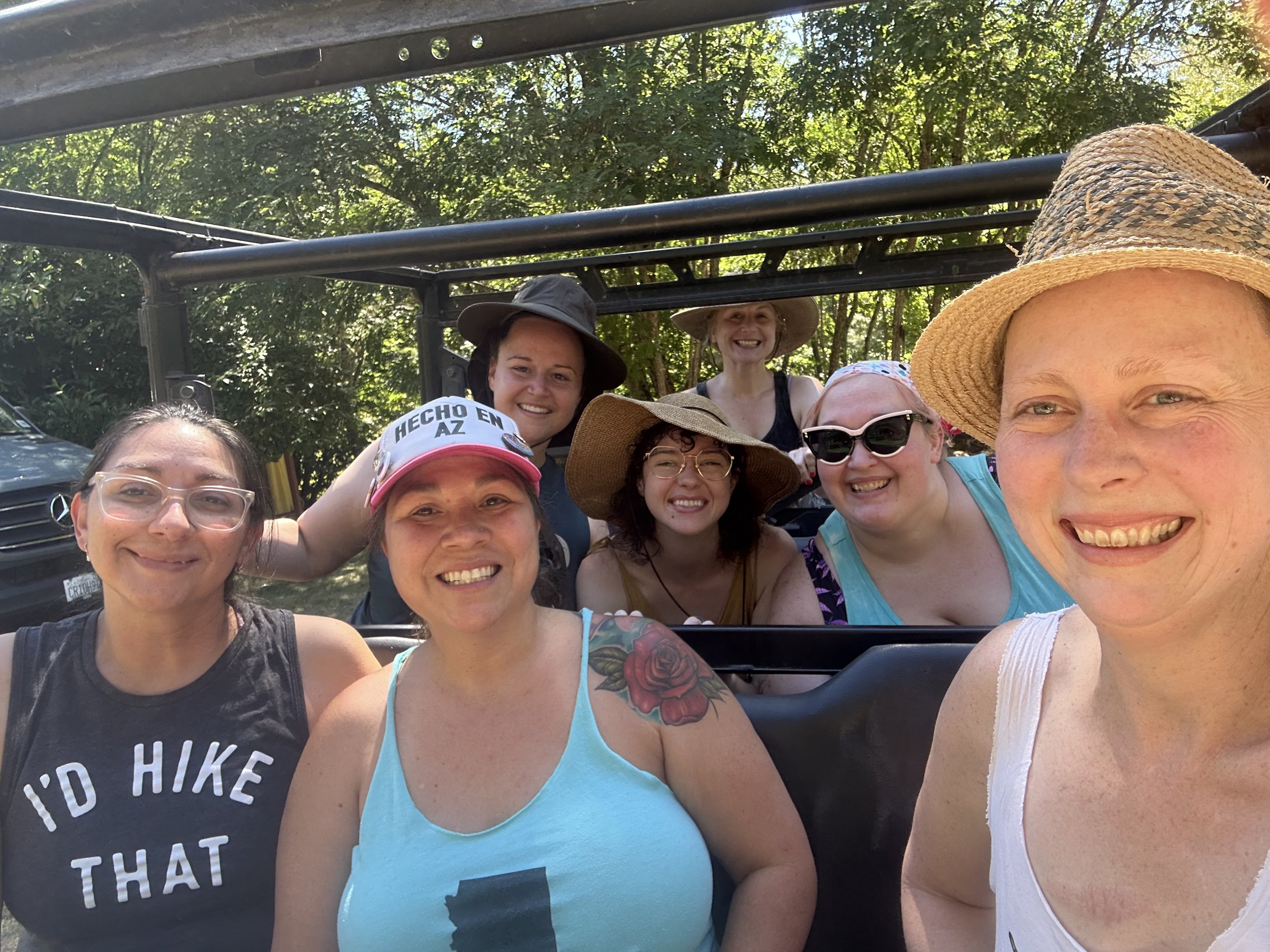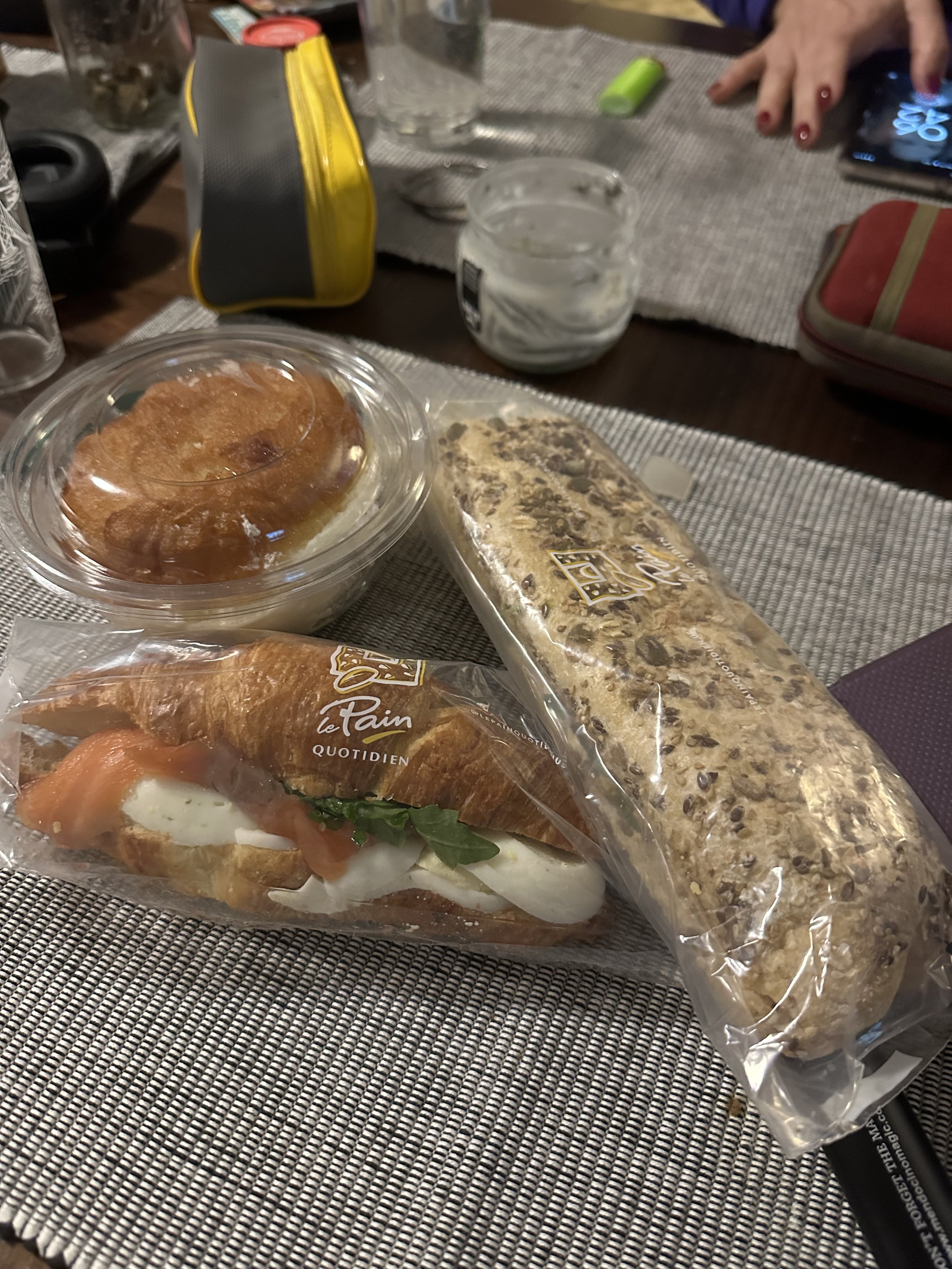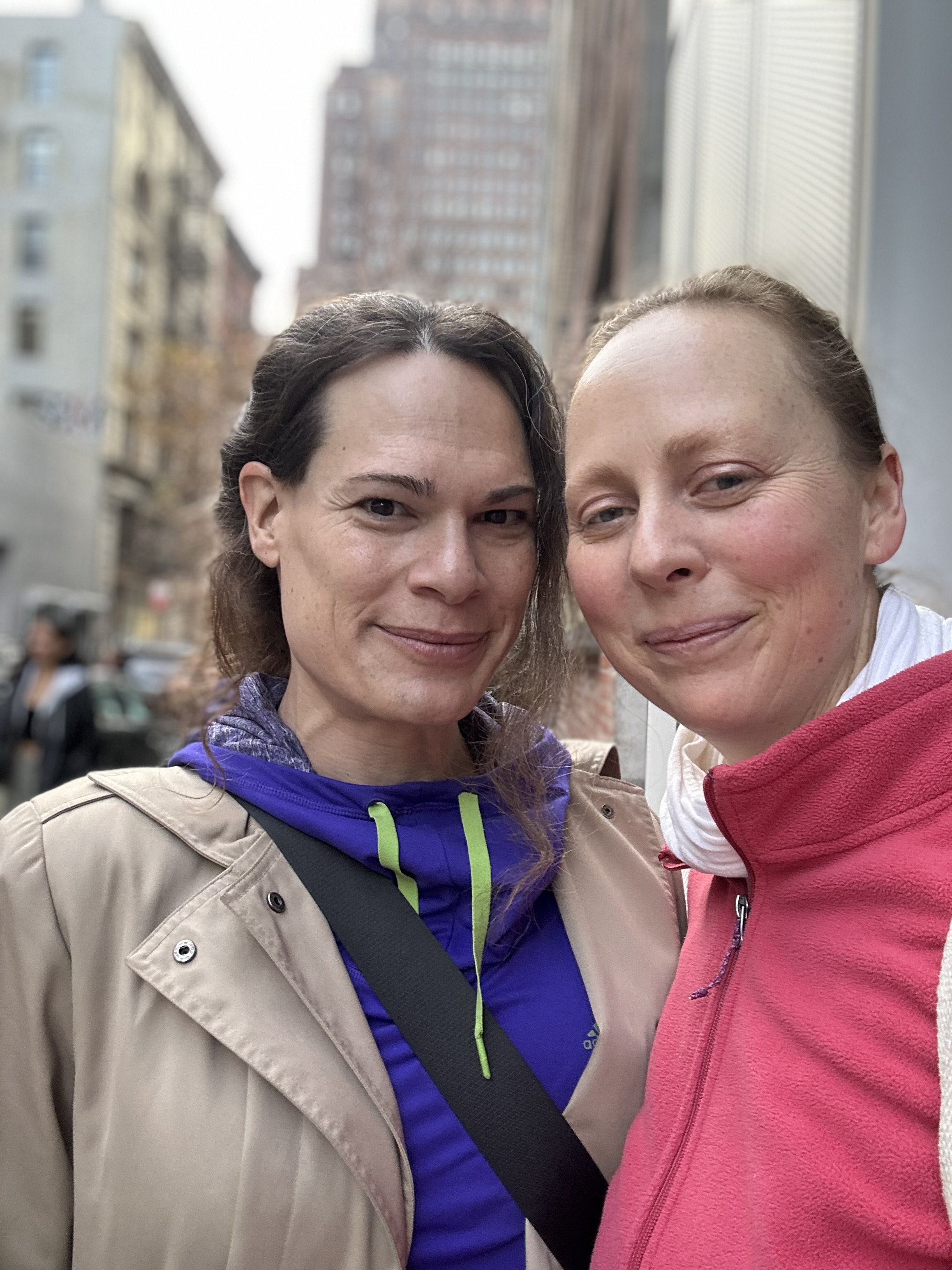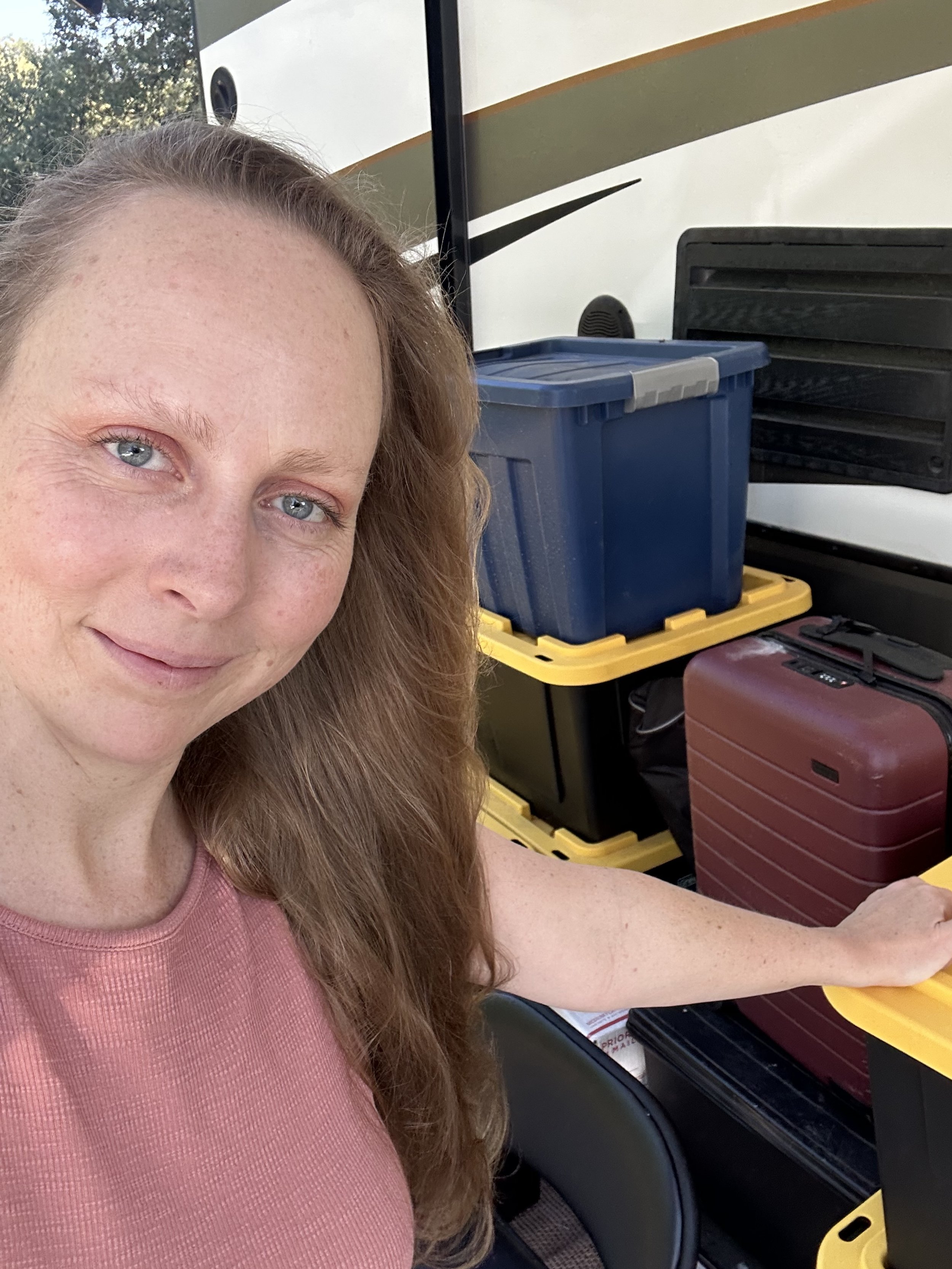11 Lifestyle Changes You Must Make Before You Become a Digital Nomad
Six months after founding Women Grow, I figured out that I couldn't afford New York City rent on a startup salary. So in July 2015, I quit my job at Tekserve, packed 6 suitcases, and shipped them to a friend's warehouse in Oakland. Almost 9 years later...I haven't paid rent or worked in an office since.
It wasn't easy. I still spent time and money on housing. I didn't move to a less expensive country. I didn't buy a van. I didn't have a trust fund.
I did end up...
🫏 infiltrating a political party
🍁 creating conferences for thousands of women in weed
🧘♀️ taking yoga trainings around the world
🏕️ running a campground
📿 leading silent retreats with 1 to 1,200 meditators
🍄 serving 🍄 in Jamaica
🇪🇺 traveling through Europe 4 times
🚙 driving over 200,000 miles
🚐 blowing up 3 borrowed RVs and finally buying a travel trailer last summer
I still have no idea "what I'm doing" but I've learned a lot.
I want to share with you the lifestyle changes I made to stay on the road indefinitely. These 11 habits have kept me healthy and sane when I didn't know where I was sleeping that night. So many of you have told me that you want to take a year off to travel. Here's the checklist to avoid expensive snags & health scares. The folks that don’t address these challenges end up quitting the Digital Nomad lifestyle to pay rent.
I want to thank all the folks who housed me over the last 9 years. There are too many to name but I'll try...Bill, Melissa, Mylee, Aundré, Gill, Charlie, Dan, Jorge, Sarah, Alexis, Corinne, Diane, Jody, Sunny, Alesha, Kelly, Cheyna, MacKenzie, Nancy, Megan, Jason, Anna, Max, Paul, KymB., Alice, Hannah, Katherine, Laura, Ashton, and more.
My Wildcat Travel Trailer and Acura RDX.
1. CREATE AN ANNUAL GATHERING FOR YOUR FRIENDS
Posting all those pics of you working from the beach won’t build camaraderie with your friends stuck at home. Traveling gives you the opportunity to make new friends every day, while making it harder to stay in touch with your old friends. Once you leave town your friends will slowly begin to forget about you.
I recommend you reverse the trend of drifting apart from your old friends by inventing an annual reason to get together. If I’ve already built a friendship with someone, I find that a quality in-person hang once a year can maintain it. I encourage you to build your own weekend campout/sleepover instead of relying on attending the same festival every year. Putting it near your birthday can help prevent the birthday blues. If you like one-on-one hangs, then invite your friends to join you on the road or design your travel to visit them.
Summer Campout with Cannabis Friends in Mendocino. Thanks to Lauren P. for organizing!
2. MAKE YOUR SELF CARE ROUTINE PORTABLE
Even if you’re visiting the most relaxing places, travel is stressful. Now is the time to create good self care habits before you’re stressed out and lost. Here are the steps that I took to be able to travel continually without stressing out…
Know Thyself. Figure out what signals your body gives you on the way to freaking out so you can self soothe. I know when I have a cold coming up or a digestive issue that needs attention before it becomes a problem. I learned this by practicing yoga in my body instead of living in my head.
Carry Emergency Stress Release Options. I travel with my favorite tea, noise canceling headphones, ear plugs, yoga mat, and gemstone jewelry. I pack cannabis and 1 over-the-counter pain reliever. Even if you don’t use any pain relievers at home, travel will probably push you into needing one at some point. I love Traditional Medicinals Teas for constipation or gas.
Create flexible morning and evening routines that work when you’re on the road. Since your environment will always be changing, you need practices that ground you. I was the type of person that would get distracted by whatever was in front of me when I woke up somewhere new. Now I try to ignore where I am for the first 1-3 hours of the day and focus on myself instead. I also added a shower to my evening routine because it helps me sleep better.
Exercise. My goal is to walk 5 miles (~10,000 steps) and exercise for 45 minutes every day. Figure out what type of exercise you can do anywhere. Build a walk into your day, every day. I switched from attending in-person yoga classes to watching recordings on youtube. If I’ll be in a town for a few days in a row, I’ll grab a yoga studio or fitness center trial membership. (Some studios limit trials to locals only, so use your hotel’s address and say you’re researching if you want to move to town.) I’ve also used ClassPass, which is a membership that gives you access to undersold fitness classes in large cities.
You can do my Yin Yoga for the Hips class anywhere (below). It’s especially nice to stretch the hips after you’ve been seated traveling all day. Yoga is also what helps me recover from sleeping in strange positions in strange places.
3. FIGURE OUT YOUR FOOD STRATEGY
Indulging in any food you want is common on vacation but it is unsustainable as a lifestyle. You’ll either blow your budget buying high-quality food or blow up your waist eating cheap calories. Here’s how I changed how I eat to get the right food at an affordable price.
Make lunch your largest meal. Many traditions recommend eating your largest meal around noon for the best digestion. Lunch specials are cheaper too.
Split big entrees into 2 meals. Some full-size restaurant meals clock in at 2,000 calories. That’s enough calories for some people’s entire day. Split your entree with a friend or save half your meal for dinner.
Cook your own food. You’ll save money and eat higher-quality ingredients when you do it yourself. Even if you don’t have a kitchen, you can make your favorite salad and top it with protein like chickpeas or smoked salmon.
Make your own snacking rules and do your best to stick to them. Once I stopped buying snacks with meat, sugar, gluten, or crappy cooking oils, there’s no snack I can buy at a gas station. This personal rule saves me about $10/day and lots of empty calories.
Try $5 Meals from TooGoodToGo. TooGoodToGo is an App that helps bakeries and restaurants sell their leftover food at the end of the day. It’s available in most large cities in the US and Europe with about 180,000 restaurants participating. In NYC I use it as an urban food safari, booking 4 different pickups each day and walking about 5 miles to get everything. I can easily feed 2 people for $20 a day in NYC if no one is a picky eater. (This isn’t a good option for gluten-free folks, low-carb, or strict diets.)
Got 2 sandwiches and a dessert for $5 on TooGoodToGo from Le Pain Quotidien on 29th & Broadway (NYC).
4. PREPARE YOUR ROMANTIC RELATIONSHIPS FOR TRAVEL
The way you date at home does not work on the road. You won’t be in the same place long enough to get to know someone slowly over months or years. That doesn’t mean you have to leave love behind but you’ll have to work harder to find Cupid’s spark. The #1 reason I see people quit #VanLife is that they get lonely. Here’s all the strategies I’ve used to have romantic relationships while traveling.
Date someone who can travel with you.
Meet someone while traveling that you can date while you’re in the same place.
Use Dating Apps to date anywhere. Feeld and Tinder make it easy to quickly see who is available around you. Sometimes I’ll change my location to the city I’m visiting next and start chatting up date options in advance.
Date yourself. Take a break from looking for romance and romance yourself. Buy yourself flowers, take yourself out to a great meal, and get a massage by candlelit (no partner required). The 6 months I spent dating myself helped release a lot of codependent habits I had. If you’ve always been in a relationship, then this is the best time to discover who you are solo.
Keep a long-distance relationship. You would be surprised how much quality time you can get with your long-distance lover if you get together for a 2-week vacation and two weekends. Let’s say at home that you’d see your date once a week for 6 hours, which is about 312 hours of time together. If you spend 16 hours together each day while traveling, you only need 19.5 days together to get the same amount of time.
Mylee and I do most of our traveling together.
5. GET GOOD AT KEEPING TRACK OF YOUR STUFF
Traveling requires you to be aware of where every single thing you have with you is located. If you tend to forget your water bottle, then you’re going to go through a lot of water bottles while you’re on the road. Here’s a few ways I worked through the very human habit of forgetting stuff.
Work on building awareness of where you put things and gathering them back up before you leave. Try putting things back in your bag right after you use them instead of leaving them out.
Make your “easy-to-forget” stuff easier to remember. I have a neon orange phone charger that I write my name on to make it easier to spot in a white hotel room.
Don’t bring your most precious stuff on the road. Reuse a disposable water bottle until you get used to keeping track of one. Buy some cheap earrings instead of bringing diamonds with you.
Do a final sweep of anywhere you were staying after you’ve packed out. Check the shower, power outlets, bed, and the mini fridge.
Get a bag with pockets and store the same important items in the same places every time. I have my bag setup so I can see if I have my laptop, passport, phone, and chargers in one glance.
6. UP LEVEL YOUR HEALTH
I can’t encourage you enough to proactively improve your health before you travel. New people, new weather, and new routines on the road will challenge your immune system.
You won’t have access to your health care team, so now is the time to do your annual checkup, STI test, and dental cleaning. Check with your providers if they can provide Telehealth appointments while you’re out of town.
One health hack that works in most cities is to find a community acupuncture clinic. Community Acupuncture is usually around $50 for the first visit and then sliding scale ($20-$50) for followup visits. I use it when I’ve got body pain that I can’t clear myself.
7. SELL / DONATE / GIVE AWAY YOUR STUFF
Traveling full-time while still paying rent full-time is a waste of resources. Don’t keep your old apartment as an overpriced storage unit. Use getting ready for the nomadic lifestyle as an excuse to clean out your closets and cabinets.
Instead of having to pack everything in the week before you leave, take a few months to do it. This gives you time to sell items of high value and find friends to give the rest away. If you’ve been in the same place for a few years, you may be shocked at how much stuff you’ve accumulated.
I’ve simplified what I own down to what fits in my travel trailer (about 10 tubs).
8. GET A MAILING ADDRESS & SIMPLIFY YOUR MAIL
When it comes to bills and taxes, you’ll need a mailing address. Here’s all the different ways I’ve continued to get my mail while on the road.
Use a relative’s home address (with their permission). It’s extra easy if you share a last name with this person.
Get a private postal mailbox. I use PostNet for $10/month because they scan the front of every letter so I can see what’s been sent to me immediately. Private mailbox services can also receive packages for you from different carriers. The disadvantage of using a private mailbox is that if you want to close the mailbox and forward your mail to another address, you usually can’t use the USPS address change service.
Get a USPS post office box. USPS boxes can only receive mail sent via USPS but are fully compatible with the USPS change of address service. You’ll need to return to the post office to see your mail or have a friend in town pick up your mail and send it to you.
Share an office or art studio space. Ask your friend with a space if you can contribute $100 a month to receive your mail and store your work setup / art hobby there. This is especially useful if you own a business in that state that needs to have a physical address to stay registered.
I also simplified my postal mail needs by doing the following.
Unsubscribe from junk mail, non-profit mailings, and catalogs.
Change physical magazine subscriptions to digital.
Change all of your bills from paper mailings to online only.
9. RENEW YOUR IDS
You are going to need at least 6 months on your passport to go anywhere. I got stuck in Hawaii with an expired driver’s license and couldn’t rent a car or even get a Costco membership without a valid ID. While you’re in one place, get all your IDs up to date. I recommend gathering these physical documents and making digital copies before you travel.
Passport
Driver’s License or State ID
Birth Certificate
Social Security Card
Health Insurance Card
Car Insurance or Travel Insurance Card
Credit Cards and Debit Cards
Medical Marijuana Recommendation (sometimes you can use a medical marijuana recommendation from another state to get out of trouble)
10. BACKUP YOUR TECH
Having your phone stolen always sucked but it’ll suck more if it has all your photos from the last year on it. Make sure your laptop and phone are being backed up on a regular basis. Don’t carry a backup hard drive with your laptop because if you lose that bag you still lose all of your data. I use Apple’s iCloud service and Dropbox to backup everything over the internet. Making a complete backup of your digital life to leave in your storage unit is a good idea too.
11. PAUSE YOUR UNMOVABLE HOBBY
Do you have a hobby or side gig that you won’t be able to take with you? There’s a lot of passions that require too much equipment to bring with you. Take the time to bring your big hobby to a safe and convenient stopping point. Sell extra equipment. Put finished art up for sale. Condense valuable tools into storage or move them into a shared workspace.
BONUS TIP
PRACTICE BEING BY YOURSELF
The #1 reason people quit traveling is that they get lonely. Now is the time to practice being by yourself if you aren’t used to it. It’s easy to fall into doom-scrolling social media when you feel disconnected from your community.
Start making good solo habits before you leave. Pick an educational course that you can work through on the road, a book you’ve always wanted to read, and some good headphones. Try a guided silent retreat to practice being by yourself.
When you feel lonely, stop scrolling! Message or call someone to create connection. Commenting on each other’s posts is fun but doesn’t create the connection we need.





